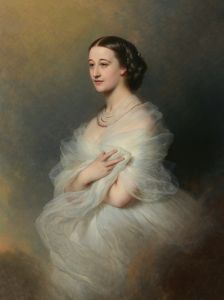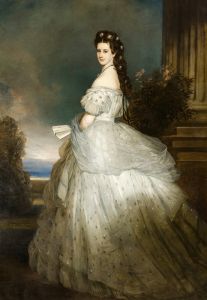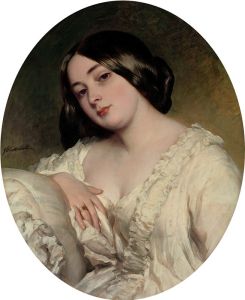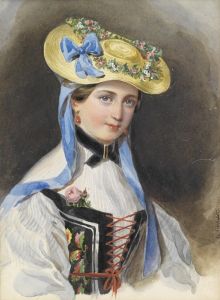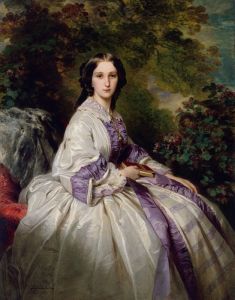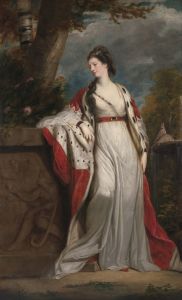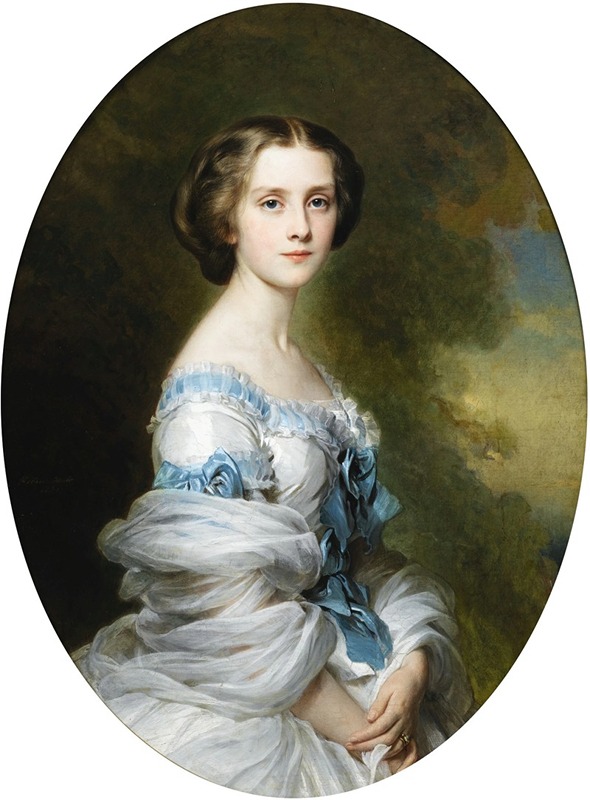
Portrait of Mélanie de Bussière, comtesse Edmond de Pourtalès
A hand-painted replica of Franz Xaver Winterhalter’s masterpiece Portrait of Mélanie de Bussière, comtesse Edmond de Pourtalès, meticulously crafted by professional artists to capture the true essence of the original. Each piece is created with museum-quality canvas and rare mineral pigments, carefully painted by experienced artists with delicate brushstrokes and rich, layered colors to perfectly recreate the texture of the original artwork. Unlike machine-printed reproductions, this hand-painted version brings the painting to life, infused with the artist’s emotions and skill in every stroke. Whether for personal collection or home decoration, it instantly elevates the artistic atmosphere of any space.
Franz Xaver Winterhalter's Portrait of Mélanie de Bussière, comtesse Edmond de Pourtalès is a celebrated example of 19th-century portraiture, showcasing the artist's renowned skill in capturing the elegance and refinement of European aristocracy. Painted in 1857, the work depicts Mélanie Renouard de Bussière, who became the Comtesse Edmond de Pourtalès through her marriage to Count Edmond de Pourtalès, a prominent Swiss-French diplomat and art collector. Mélanie was a notable figure in Parisian high society during the Second Empire, known for her beauty, charm, and influence as a salonnière.
The portrait exemplifies Winterhalter's mastery in portraying the opulence and sophistication of his sitters. Mélanie is depicted in a sumptuous evening gown, adorned with intricate lace and delicate jewelry, emphasizing her status and refinement. Her pose is graceful yet relaxed, with a serene expression that conveys both confidence and poise. The artist's attention to detail is evident in the rendering of textures, from the softness of the fabric to the luminous quality of her skin. The background is understated, ensuring that the focus remains on the sitter while subtly enhancing the overall composition.
Winterhalter was a highly sought-after portraitist among European royalty and aristocracy during the mid-19th century. His ability to idealize his subjects while maintaining a sense of individuality made his works particularly appealing to his elite clientele. The Portrait of Mélanie de Bussière is a quintessential example of his style, blending realism with a touch of romanticism to create an image that is both lifelike and aspirational.
The painting is also significant as a representation of the cultural and social milieu of the Second Empire under Napoleon III. Mélanie de Pourtalès was a key figure in this era, hosting influential gatherings that brought together politicians, artists, and intellectuals. Her portrait by Winterhalter not only immortalizes her beauty but also serves as a testament to her role in the cultural and social life of her time.
Today, the painting is recognized as one of Winterhalter's masterpieces, celebrated for its technical brilliance and historical significance. It remains an enduring symbol of the elegance and grandeur of 19th-century European aristocracy.







